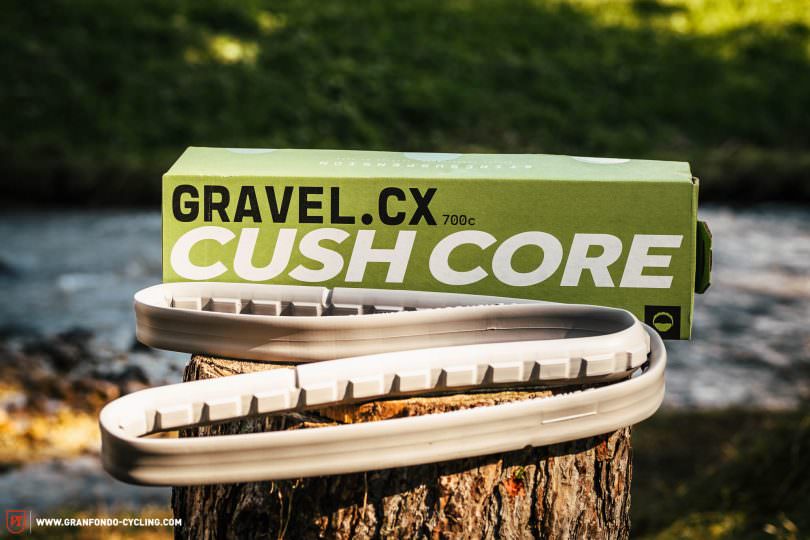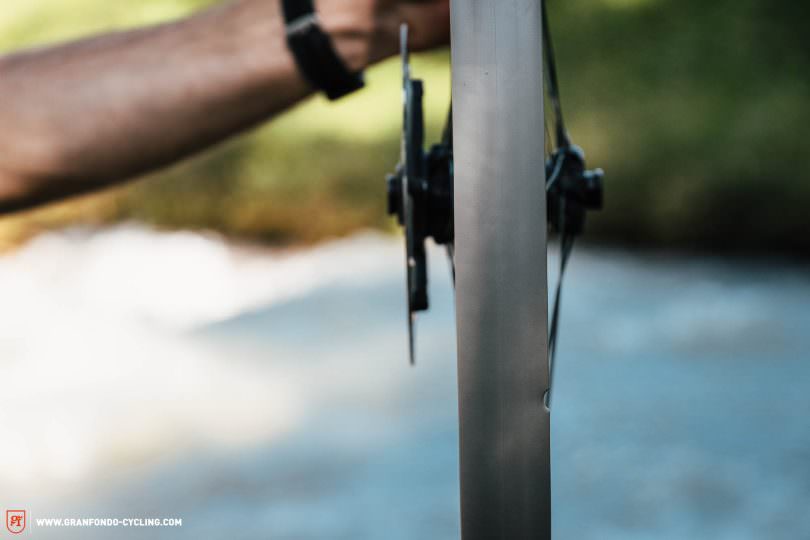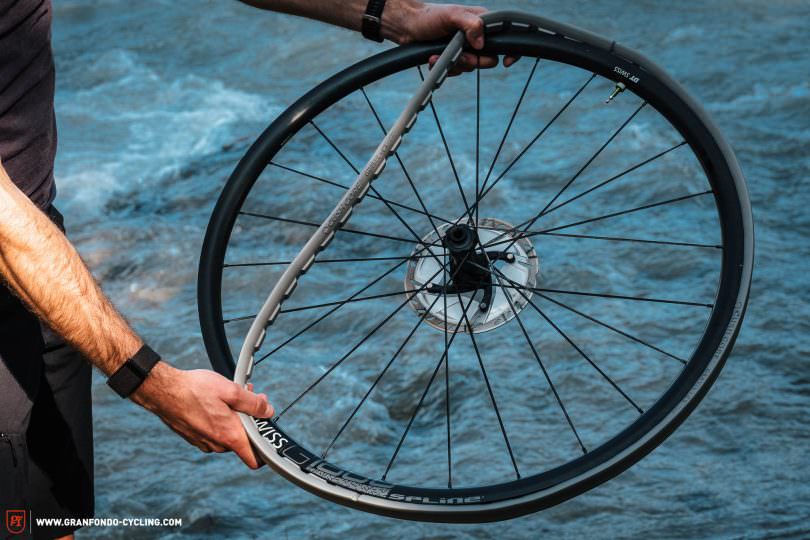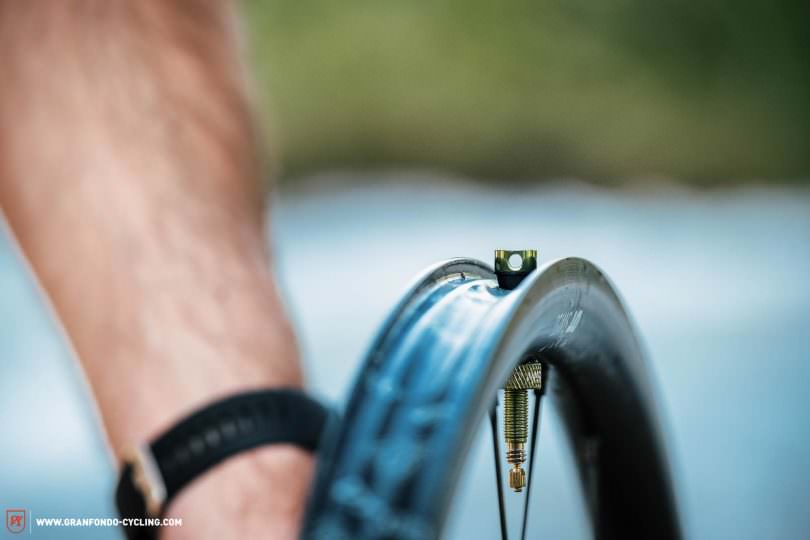CushCore Gravel.CX tire inserts long-term review
Gravel is booming: more bikes, more accessories. Wider tire-wheel combinations shift the application of some bikes significantly in the direction of mountain bike terrain, which means that mountain bike technology is also finding its way into the gravel sector. One example: tire inserts. We tested the CushCore Gravel.CX inserts and give you the low down on everything you need to know.

For those switching from mountain bikes to gravel bikes, tire inserts should be an old hat. For everyone else: tire inserts are foam or plastic “liners” that fit between the tire and rim on tubeless tires. There are different approaches to this which are discussed in more detail in our know-how article in this issue. However, what they all have in common is that they are claimed to improve various properties of a tubeless tire, from more comfort and better vibration damping to improved puncture protection, increased tire stability in corners and the (emergency) option of riding a tire that’s flat.

The Gravel.CX is made for 700C wheels with an inner rim width of 19–26 mm and tires of 33–46 mm.
We tested the Gravel.CX tire inserts from CushCore and rode them over the course of two months across different terrain. Our testing covered the entire gravel spectrum: broken asphalt, gravel and various grades of forest track, as well as trails with flow sections but also with roots and rocks. The Gravel.CX inserts were mounted together with 700 x 40C Schwalbe G-One R tires on DT Swiss G 1800 SPLINE DB 25 wheels with a 24 mm inside width, as well as 700 x 35C Bontrager GR1 Team Issue tires on Roval CLX 50 wheels with a 21 mm inside width.
On and off – Mounting the CushCore Gravel.CX tire inserts
To mount the CushCore Gravel.CX inserts, you need the usual sundries for a tubeless setup: tires, wheels, tubeless sealant and tire levers. Of course, you’ve also got the tire insert itself and CushCore’s three-way tubeless valve which comes with it. This is a necessary part of the installation because the insert sits on the rim bed where it covers and seals the opening of a conventional valve. The three-way valve has two more openings on the side, allowing air to flow in and out regardless. With the valve installed, the Gravel.CX insert is pulled onto the rim. This requires some force but was easily accomplished on both wheels we used. With the insert centred in the rim bed, the tire is mounted. One tire bead should first be pulled over the tire insert before being mounted between the rim wall and insert. This done, you can add sealant before seating the second tire bead. To get everything set in the right position, we had to use two tire levers and a bit of brute force for both setups we tested. If you already have experience dealing with tubeless tires you should also be able to cope with installing the CushCore Gravel.CX. Nonetheless, it should be mentioned that the tolerances of tires can vary wildly and some tires won’t mount on some wheels even with all the force and effort you can muster. If the tire insert gets in the way, frustration isn’t far off and while this isn’t an inherent fault of the CushCore insert, the potential need for an alternative choice of tire should be considered.

The tire insert has to be installed in the rim bed before the tire. As the Gravel.CX is a closed loop, you’ll have to remove your wheels anyway. Some brute force will be required to get the tire insert into position.
Even with no air in the tire, the Gravel.CX insert locks the tire against the bead seat, making removal somewhat difficult. It takes a little dexterity and strength to lever the tire bead off the rim initially, though once you’ve managed, it will come off with little protest. Then you can either remove the tire insert or tire first, depending on what works better for you. No matter which order we did it in, during our testing this went off without a hitch with no sticking of the tire, tire insert or rim, meaning all parts could be reused without any issue.

You should use the supplied three-way valve for the Gravel.CX insert, otherwise you might not be able to deflate your tires.
Trail fun – CushCore Gravel.CX inserts on test
During testing, the Gravel.CX inserts shone everywhere where you would otherwise think about swapping your gravel bike for a mountain bike: on trails and rough terrain with rocks and roots. In exactly this terrain they allow a lower tire pressure without the risk of punctures and thus expand the range of use of gravel bikes. The foam material of the tire insert adds damping, meaning the “suspension travel” of the tire is no longer linear but progressive. The reduced pressure also results in a larger contact patch, which provides increased grip particularly when setting off, going uphill and braking. Because the insert locks the tire bead in place, the tire doesn’t jump off the rim through corners even at very low pressures, offering an increase in safety, cornering grip and stability. Moreover, even when completely flat, the tire remains in position and can be ridden tentatively. This also means that it’s usually possible to inflate the tire with a simple hand pump when it’s flat, without having to resort to a compressor or tubeless pump. While the Gravel.CX tire inserts offer a performance boost in rough terrain due to better grip and damping, they primarily serve to provide more comfort and noticeably better efficiency on gravel due to the lower possible tire pressure. This is due to the fact that at lower tire pressure, the tire can deform around obstacles rather than having to move up and over them. If you don’t overdo it with too little pressure, where the entire advantage evaporates into additional rolling resistance because of an overly flexed tire, you’ll be faster overall or working less hard at the same speed.

… CushCore Gravel.CX inserts enable lower tire pressure without increasing the risk of punctures. This protects tires and rims from more than just the jump line.
However, like other gravel tire inserts, the Gravel.CX isn’t at home on hard-packed surfaces or asphalt. Here, low rolling resistance is the top priority and you’d usually ride with a tire pressure that reduces the risk of punctures anyway. The advantages of the Gravel.CX system don’t justify its additional weight, which has a negative effect on the agility of the bike when setting off and changing direction quickly. Our opinion on tire inserts for gravel bikes can be found in our know-how article “Tire inserts – What are their benefits on a gravel bike?”
CushCore Gravel.CX tire inserts conclusion
The Gravel.CX tire inserts from CushCore convinced in our test with problem-free mounting and removal. Moreover, they minimised the risk of punctures at lower air pressures in rough terrain. This makes the tire inserts an interesting upgrade for all those who also ride their gravel bike in rough terrain and who enjoy under-biking. All those who prefer to ride on hardpack can happily leave go without.
Tops
- more lateral stability for tires run at low air pressure in rough terrain
- protects tires and rims from punctures
- more comfort and vibration damping due to lower tire pressure
- tire can be inflated without compressor or tubeless pump
Flops
- relatively high weight
- no noticeable rebound damping
Tester: Tobi
Test duration: 2 months
Size: 700C tires
Price: € 179.95 (set)
Weight: 240 g (set)
Area of use: Gravel
You can find more information about the CushCore Gravel.CX tire inserts at cushcore.com
Did you enjoy this article? If so, we would be stoked if you decide to support us with a monthly contribution. By becoming a supporter of GRAN FONDO, you will help secure a sustainable future for high-quality cycling journalism. Click here to learn more.
Words: Tobias Hörsch Photos: Peter Walker, Valentin Rühl






